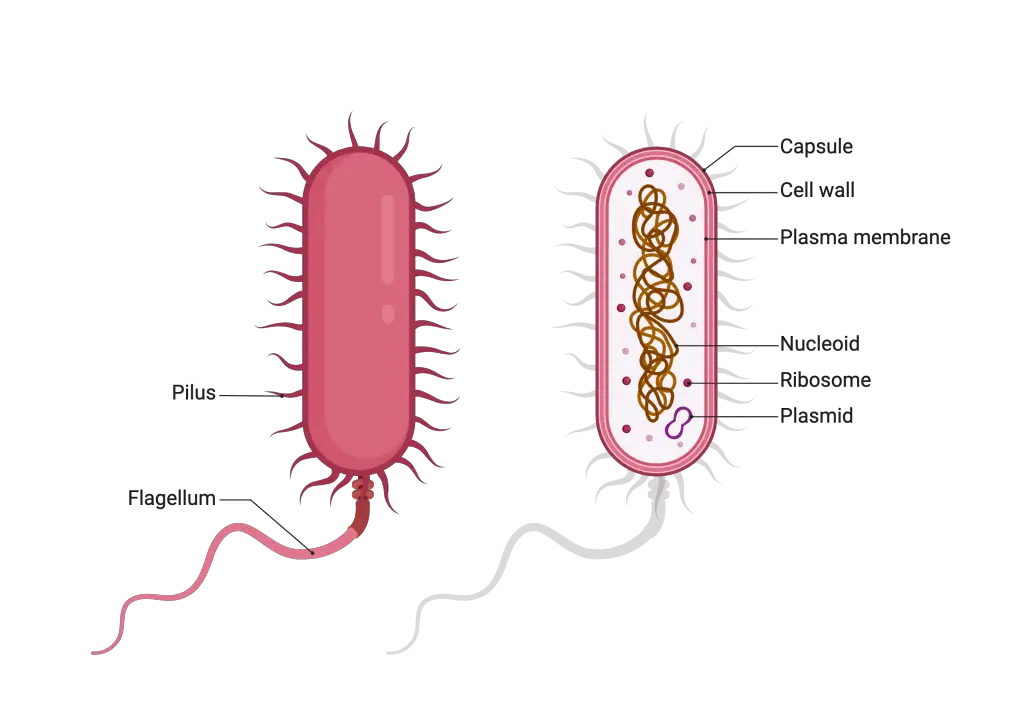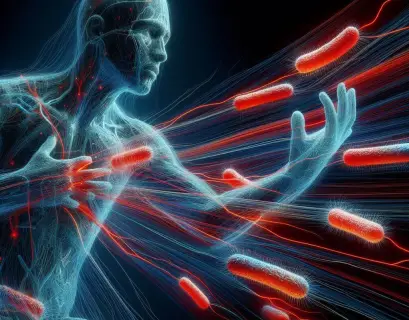Bacteria are fascinating microorganisms that play a significant role in various ecosystems and have both positive and negative impacts on our lives. Understanding the structure and function of bacteria cells is essential for students studying biology at the GCSE level. In this guide, we’ll delve into the world of bacteria cells, covering their structure, functions, and importance.

Structure of Bacteria Cells:
Bacteria cells are prokaryotic, meaning they lack a true nucleus and membrane-bound organelles. Despite their simplicity, bacteria cells are highly efficient and diverse. Here are the key components of a typical bacteria cell:
- Cell Wall: Bacteria cells are surrounded by a rigid cell wall that provides shape and protection. The composition of the cell wall varies among different bacterial species, with some having a thick layer of peptidoglycan, while others have additional layers like an outer membrane.
- Cell Membrane: Beneath the cell wall lies the cell membrane, a semi-permeable barrier that controls the movement of substances in and out of the cell. It plays a crucial role in nutrient uptake and waste elimination.
- Cytoplasm: The cytoplasm fills the interior of the cell and houses various structures necessary for cellular functions. It contains enzymes, ribosomes, and the bacterial chromosome (a single circular DNA molecule) suspended in a region called the nucleoid.
- Ribosomes: Bacteria cells contain ribosomes, which are responsible for protein synthesis. These ribosomes are smaller than those found in eukaryotic cells.
- Flagella: Some bacteria possess flagella, whip-like appendages that enable movement. Flagella help bacteria navigate through their environment, seeking nutrients or avoiding harmful conditions.
- Pili: Pili are hair-like structures found on the surface of some bacteria cells. They play roles in adherence to surfaces, conjugation (the transfer of genetic material between bacteria), and other functions.
Functions of Bacteria Cells:
Bacteria cells exhibit a wide range of functions, contributing to both ecological balance and human welfare:
- Nutrient Recycling: Bacteria play a crucial role in nutrient cycling by decomposing organic matter and recycling nutrients back into the ecosystem. This process is essential for maintaining soil fertility and the health of ecosystems.
- Symbiotic Relationships: Some bacteria form symbiotic relationships with plants, animals, or other organisms. For example, nitrogen-fixing bacteria in the roots of leguminous plants convert atmospheric nitrogen into a form usable by plants, enhancing soil fertility.
- Disease and Pathogenesis: While many bacteria are harmless or even beneficial, some species can cause diseases in humans, animals, and plants. Understanding the structure and function of bacteria cells is vital for studying infectious diseases and developing effective treatments.
- Biotechnology: Bacteria cells are widely used in biotechnology for various purposes, including the production of antibiotics, enzymes, and genetically modified organisms (GMOs). Their ability to rapidly reproduce and manipulate genetic material makes them valuable tools in research and industry.
Importance of Studying Bacteria Cells:
Studying bacteria cells at the GCSE level is essential for several reasons:
- Understanding Microbial Life: Bacteria are the most abundant and diverse organisms on Earth. Studying their cells helps students appreciate the complexity and importance of microbial life.
- Health and Medicine: Understanding the structure and function of bacteria cells is crucial for understanding infectious diseases and developing strategies for disease prevention and treatment.
- Environmental Science: Bacteria play vital roles in nutrient cycling, bioremediation, and other ecological processes. Knowledge of bacteria cells is essential for understanding and managing ecosystems.
- Biotechnology and Industry: Bacteria cells are valuable tools in biotechnology and industry, contributing to advances in medicine, agriculture, and environmental protection.
Bacteria cells are fascinating microorganisms with diverse structures and functions. Studying bacteria cells at the GCSE level provides students with essential knowledge about microbial life, health, ecology, and biotechnology, paving the way for further exploration and understanding of the microbial world.




